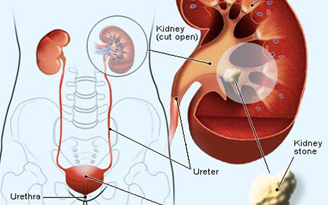Feline urinary tract syndrome
Feline urinary tract syndrome: Feline Urinary Syndrome, or FUS, is a common condition in cats. In addition, the cost of treatment can be high, and if left untreated, it can become a life-threatening disease.
Basically, FUS is a disease of the urinary system, consisting of kidney or bladder stones, urinary stones, and cystitis (cystitis or inflammation).
Symptoms of FUS include frequent urination, frequent urination, and blood in the urine, urinating in a normal or abnormal position, abdominal pain, and crying.
Urologist in Jaipur: Bladder stones and stones can cause this condition. It can also cause inflammation and irritation of the urethra. When these stones or stones pass from the bladder to the urethra, they are very painful when passing through the urethra. If the stone or stone is too large to pass, it can block the urinary tract. When partially or completely blocked, the bladder begins to swell like a bladder, like urine. The bladder fills with urine and the cat is unable to urinate, two problems that can be life-threatening. First, your bladder will fill and burst. Second, if you don't cleanse your bladder, toxins build up in your body and cause poisoning.
Feline urinary tract syndrome is more common in males than females because males have a smaller urethra than females.
This could be fatal. If you think your cat has them, talk to your vet.
If the infection is mild and the cat is able to heal on its own, treat with antibiotics and subcutaneous fluids. Also ask your vet to send blood and urine to a lab. Urine and blood tests provide valuable information about your cat's condition.
If your cat's symptoms are so severe that she doesn't want to urinate, ask your vet to take her to the hospital. If you are in a hospital, your doctor may place a chest tube. A catheter may be inserted to empty the gastrointestinal tract and remove stones, especially from the bladder. An abdominal radiograph is recommended to detect cystic stones. If a large enough stone is seen on the x-ray, it cannot pass through the catheter and must be removed manually.
The vet must send the blood and urine to the laboratory. Urinalysis can reveal the presence and appearance of stones and crystals. By knowing the type of stones, your vet can advise you on what foods to eat in the future to prevent the stones from coming back. Sending the blood to the lab helps the vet detect high blood levels [blood urea nitrogen (BUN), creatinine levels]. This sign will tell you if the urine is toxic to your cat. This needs to be taken care of.
Cats are usually hospitalized for 3-5 days until the blisters disappear. After this time, the veterinarian will remove the catheter to see if the patient has developed a new blockage. If the patient develops a new blockage, he or she can manually remove the stone or insert a catheter, usually after 3 to 5 days. Of course, during this time there is no guarantee that the stone will die. Visit the Institute of Urology for enlarged prostate surgery in Jaipur.
Occasionally cats can develop acute urinary tract infections. Dogs with recurrent FUS may have a special procedure called a perineal urotomy (PU). Many people say that the operation is a sex change. During the procedure, the upper part of the colon is lifted and the urethra is expanded, allowing all the crystals to move freely. This system does not cure the disease. It simply helps reduce the risk of life-threatening urinary tract infections.
.jpg)


Comments
Post a Comment